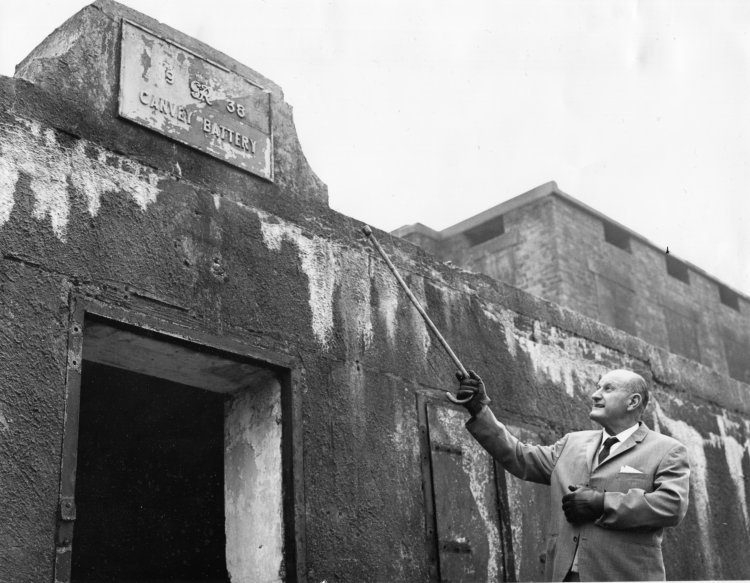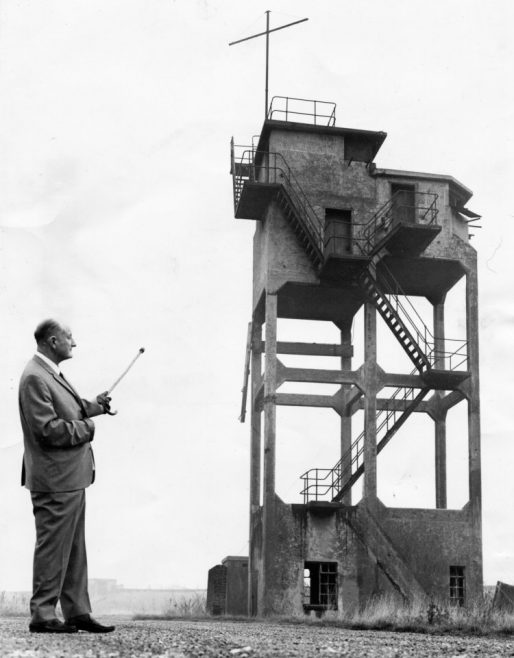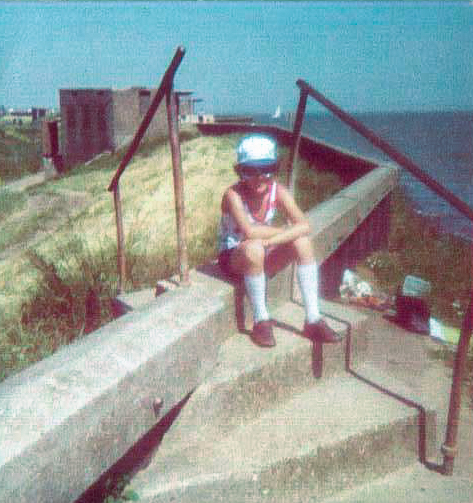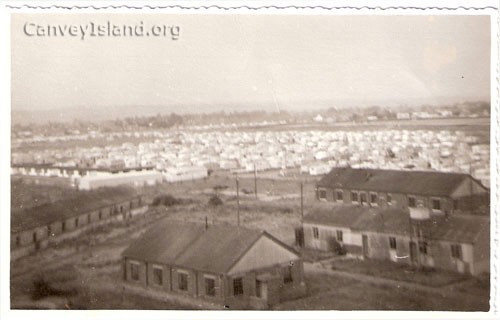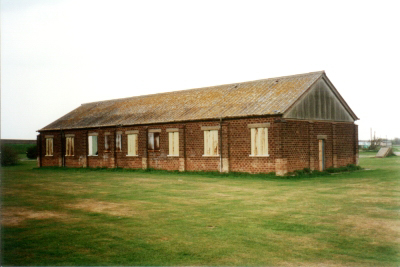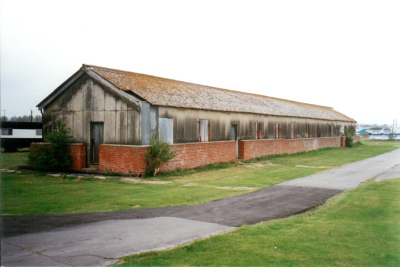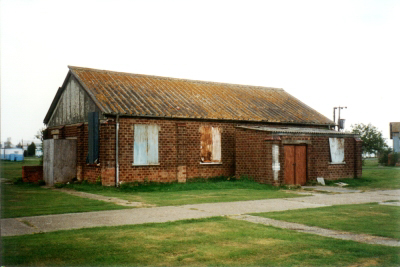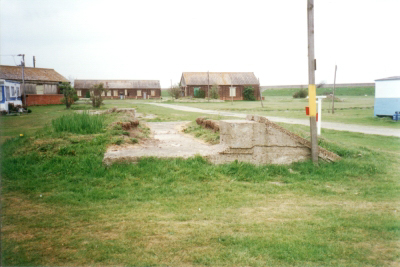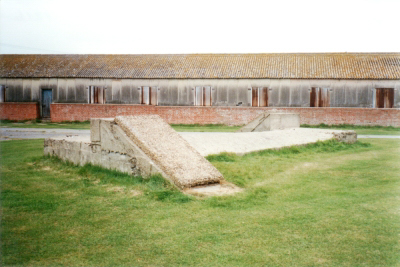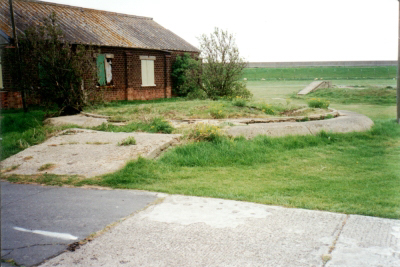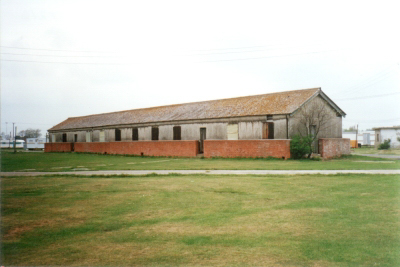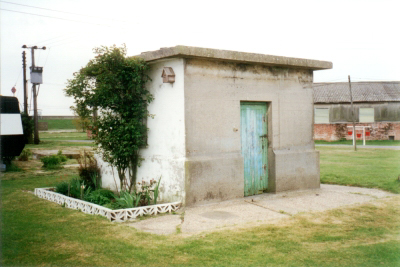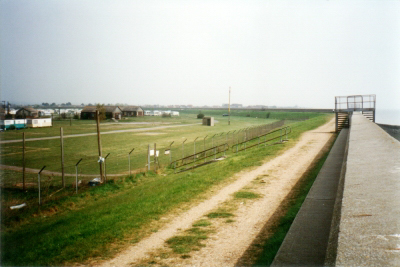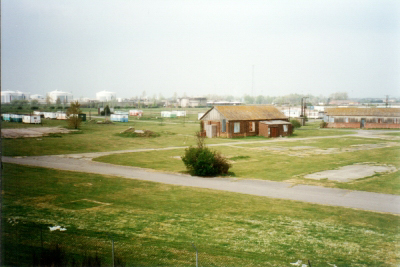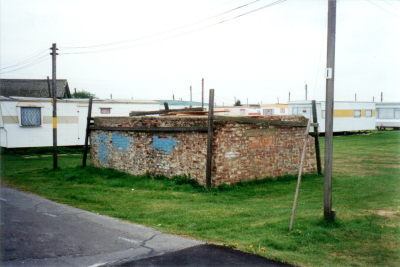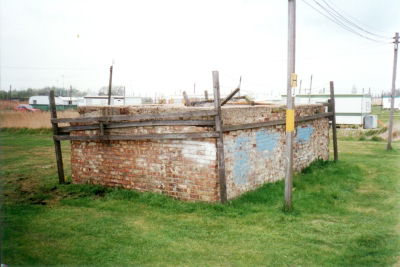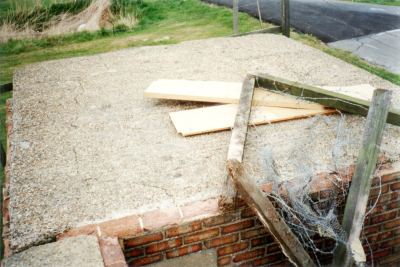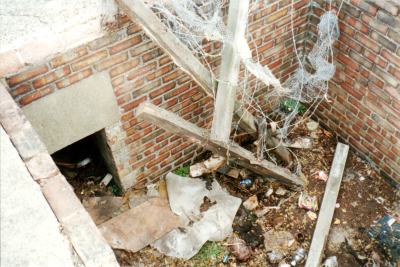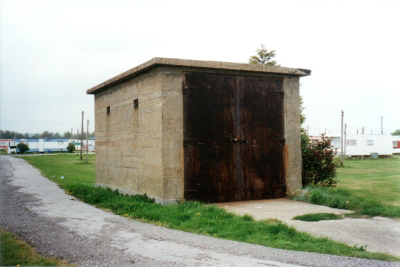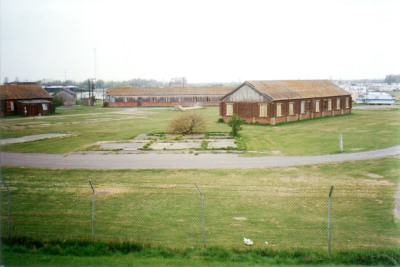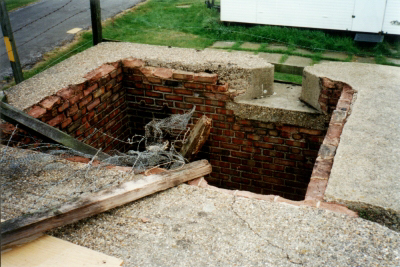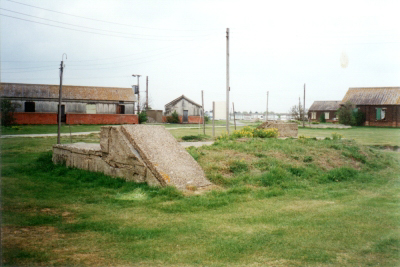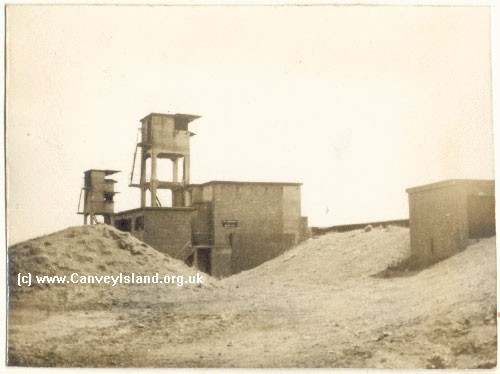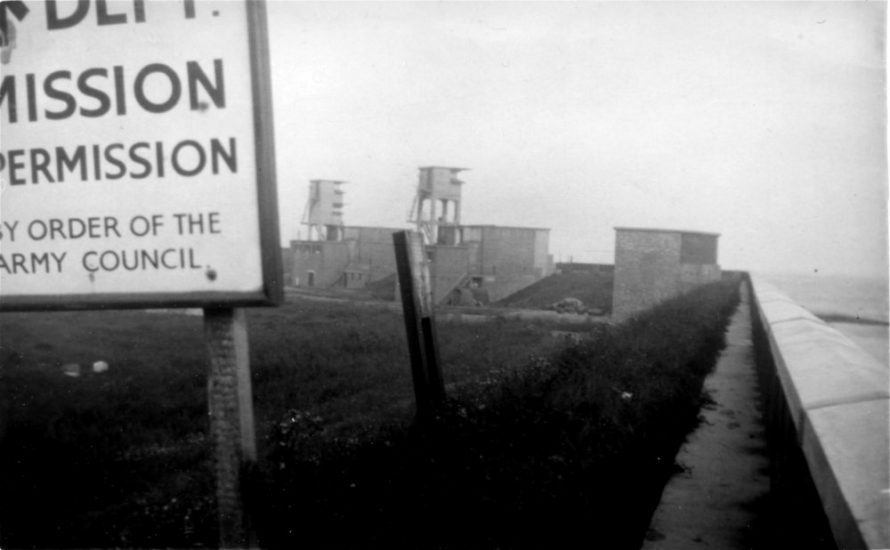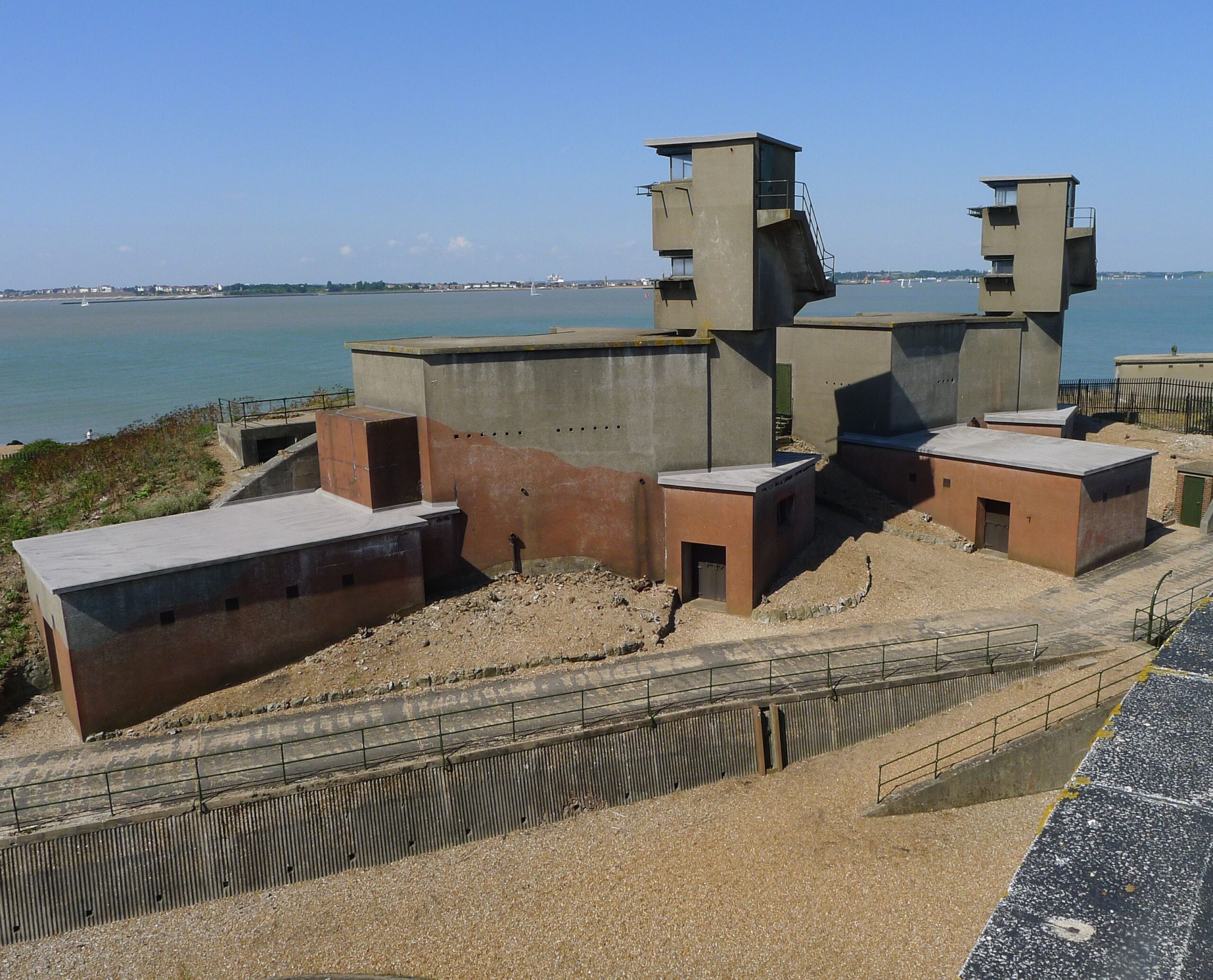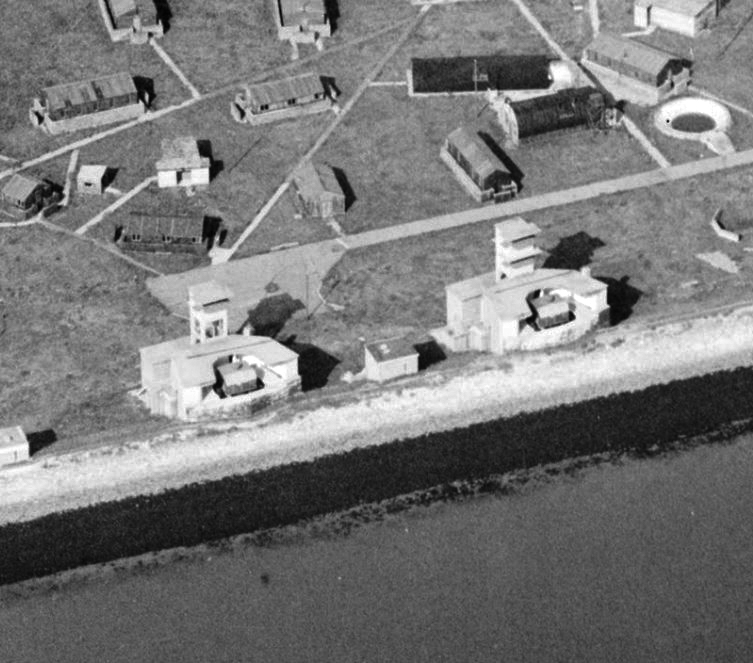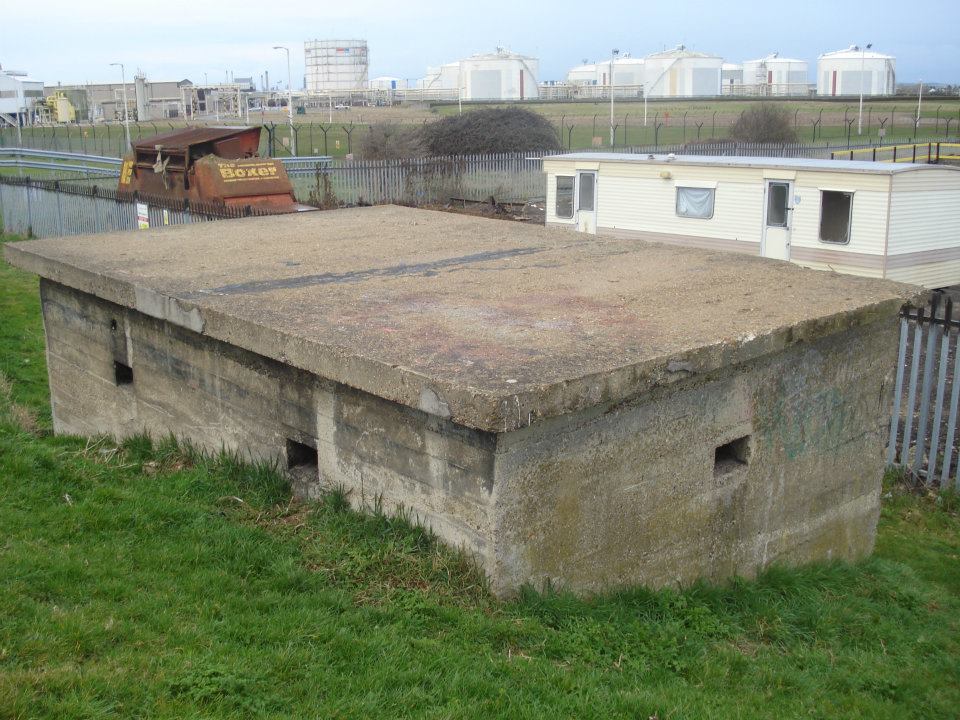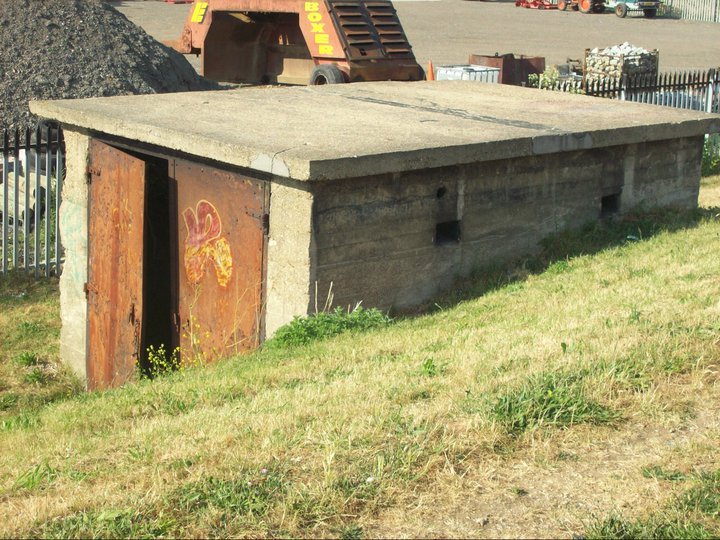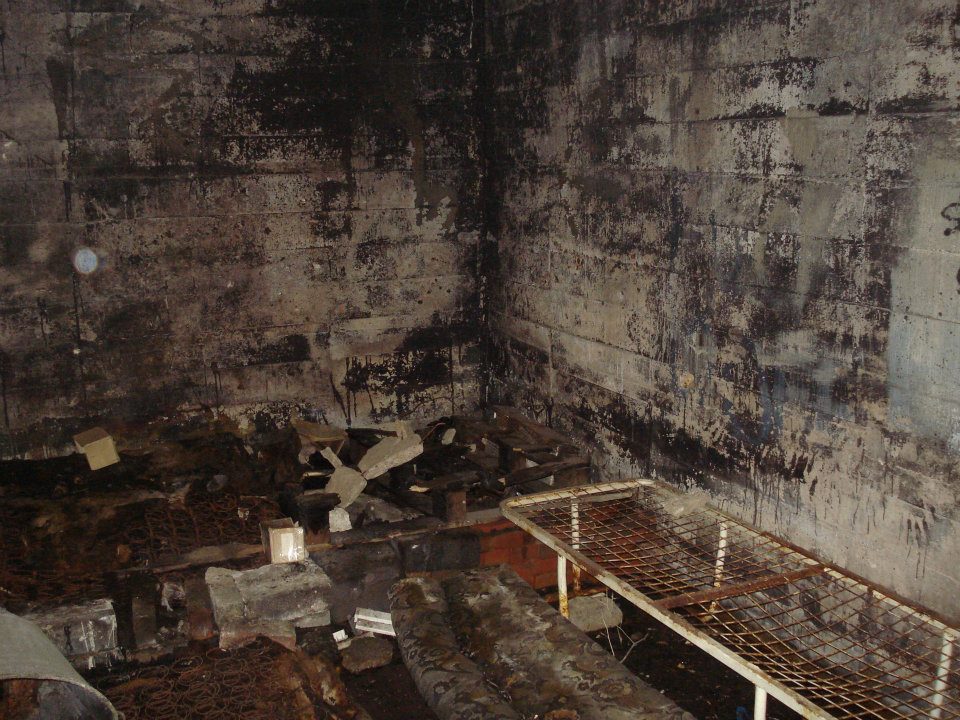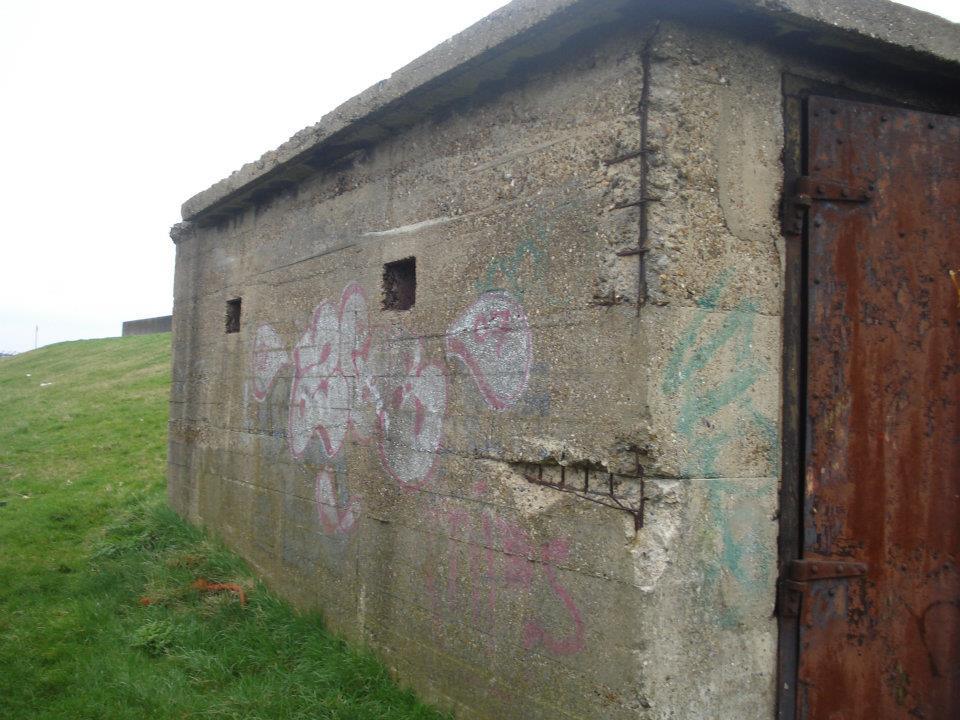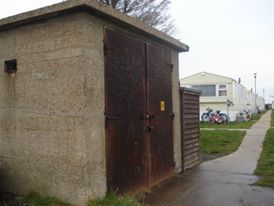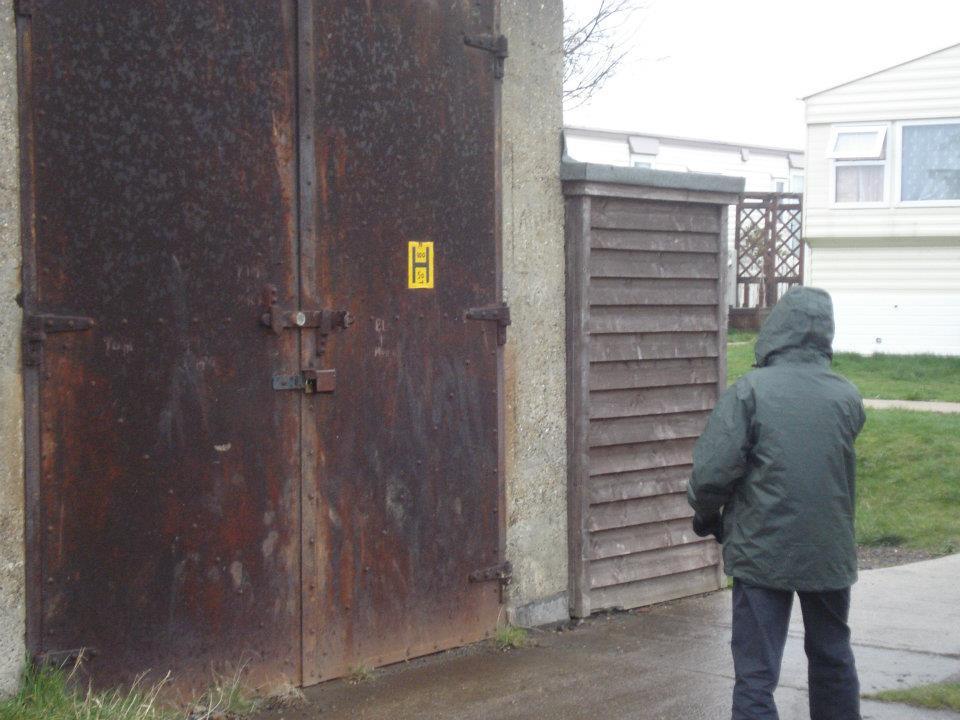Canvey Island was a fairly quiet area in the 1930s, so when it became heavily militarised to defend against air, land, and sea on the approach to World War Two, it must have come as quite a shock. Arguably, this was one of the changes the island saw which transformed it into the town it is now. Two coastal defence batteries were constructed near Thorney Bay on Canvey’s southern seawall to defend the Thames Estuary in case of invasion which might have seen German vessels heading down the river to London, or trying to land troops on the marshland at its mouth. Deadmans Point battery, also impressively known as Canvey Fort, stood on the site of Thorney Bay holiday camp and was armed with two huge six-inch naval guns against warships. Just west of this was the later smaller supporting Scars Elbow battery, armed with two 6-pdr guns and controlled the cross-Thames defensive boom detailed here, which was a smaller but quicker battery to defend against torpedo boats. Both batteries had associated camps to house personnel and for operations. They were named after geographic points in the island’s seawall, although Deadman’s Point is said to have traditionally been a place where bodies floating down the Thames would be washed up.
When researching these batteries, it is sometimes difficult to differentiate them as they are often confused or collectively named as Thorney Bay battery given their very close proximity. Therefore, whilst all information below is taken from credible sources, it is possible there may be some confusion between the batteries in the details. From 2018-2019, our own Liam Heatherson produced the first detailed academic study on the batteries and their impact on local communities and the environments as his dissertation for the University of Exeter. It is entitled ‘How have home front defensive works and their associated activities impacted coastal communities, infrastructure, and environments within the Thames Estuary during and in the aftermath of the Second World War?’. Whilst not a published work, it took meticulous research including interviews and archival visits and was awarded a Distinction, so can be considered a reliable history on the batteries and island’s other defences, as well as covering them in the build up and aftermath of war. Download the full study on the batteries’ history free here.
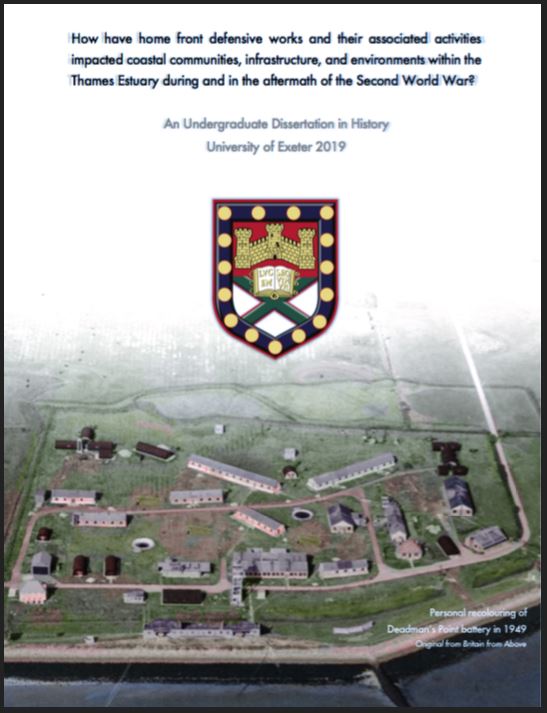
Deadmans Point Battery
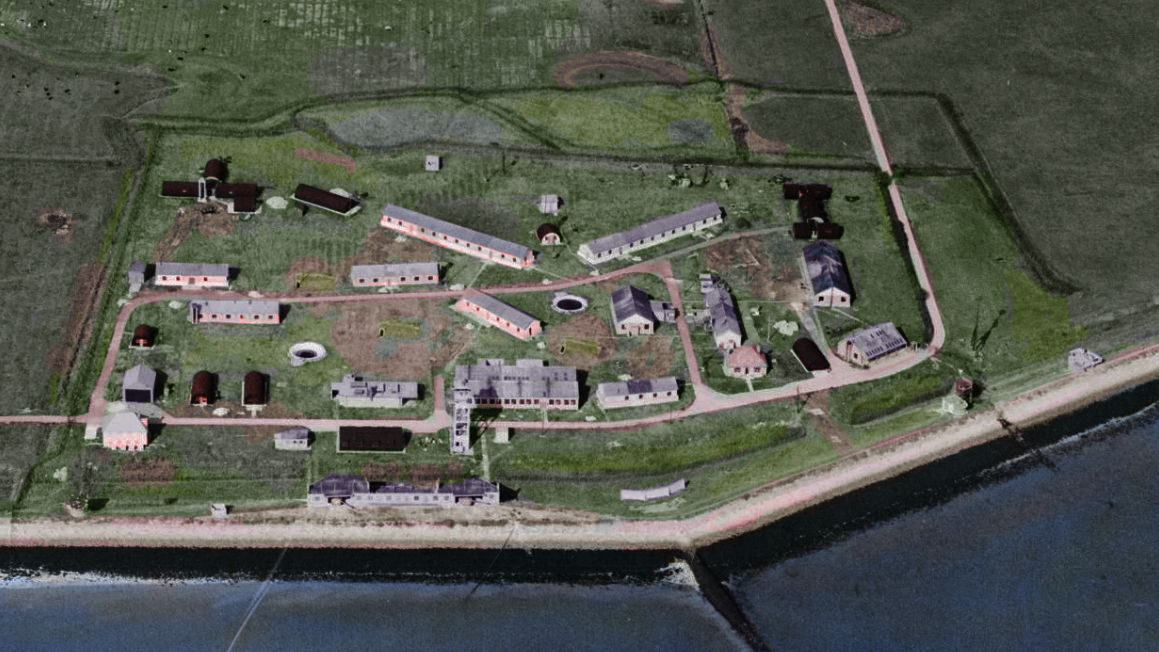
A recolouring by Liam of the battery, aka Canvey Fort, in 1949 (Britain from Above)
The battery was constructed pre-emptively around 1938 in the build up to war. Above you can see the two 6-inch naval guns embedded in a large seawall emplacement with an observation tower behind, designed to fire upon large relatively slow-moving enemy ships. The guns were essentially what would be mounted on a warship emplaced in a concrete battery instead. The large camp behind the guns was used to house the soldiers who would work on the battery and for its operations. It is said that during the war, the local secret ‘spec-ops’ Auxiliary Units were tasked with infiltrating the battery to test its security, being found to do so successfully which prompted it to be better secured.
The Fate of the Battery
After wartime, Colonel Horace Percy Fielder; said to be a man very defensive over his property towards inquisitive youths, turned the army camp sheds into a holiday camp amongst the gun site. It is a fond memory of many Eastenders who formed much of Canvey’s population today because they moved down after going on holidays here, initially staying in the army buildings. Children would play in the ruined defences as many recall doing. The gun battery along the seawall was sadly demolished with the rebuilding of the seawall in the late 1970s, but some of the camp inland survived until much later as pictured in the next section. Below are images from the 1969 with the gun battery with ‘Canvey Battery’ plaque prior to its demolition. The Canvey Community Archive details this further.
Below is a lucky find of a 1977 photo of Liam’s father James Heatherson on holiday as a boy in front of the battery buildings. At first this was thought to be the Scars Elbow battery buildings, although upon closer inspection this appears to be the main gun emplacement at Deadmans Point. The building in the background corresponds with that seen above Fielder in the above photograph confirming this. Also pictured are the camp sheds amongst the caravan park probably in the 1950s.
The Camp Remains in the 1990s
Next up are some pictures I found over at the formidable but sadly now defunct online resource ‘SEAX’. These records are believed to be held by county initiatives under Heritage Gateway now. The excellent photos were taken of the last remnants of Deadmans Point battery camp in the 1990s by Fred Nash, apparently an old owner of the site although better known as a man who has done a great deal to formally document defence heritage across the county to date. Pictured are three rectangular huts (at least one for accomodation), an otherwise-unknown sorry looking square pillbox with its roof missing, a sealed air raid shelter, generator shed, and a small utility hut.
Scars Elbow Battery
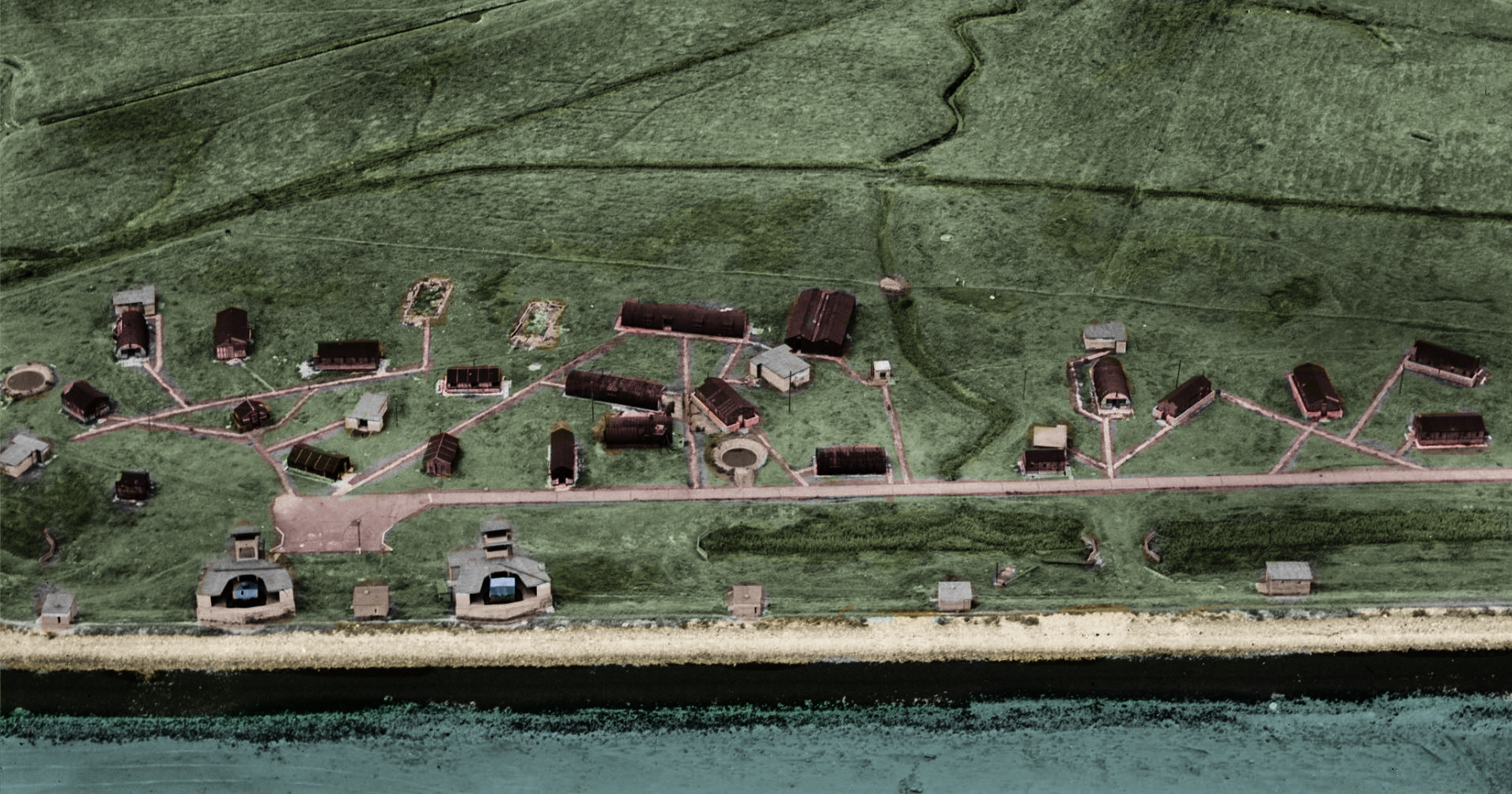
A recolouring by Liam of the battery in 1953 (Britain From Above)
This battery was constructed after Deadmans Point in 1940 against raiding torpedo boats. Twin 6-pounder guns were installed and we faster but less powerful of that of the other battery, and could deliver a stream of aimed fire at over 100 rounds a minute. This was suited to its smaller but faster intended types of target. Below are two images approaching the battery in the 1950s.
The battery never saw action and the camp was dismantled soon after the war, but the gun emplacements likely survived into the 1960s until demolition due to health and safety concerns. Pictured below is Beacon Hill fort in Harwich; an example of near-identical 6-pdr gun emplacements which still survive, and a closeup of those at Canvey in 1949. It is great another example of such emplacements survives in Essex, as the Beacon Hill battery is now being restored by an excellent team of volunteers you can read about here. This is a highly protected Scheduled Monument; sadly a status the Canvey batteries would have likely received if they had survived just a few years longer and been appreciated for what would now have been recognised as world heritage value.
Surviving Searchlight Generator Sheds
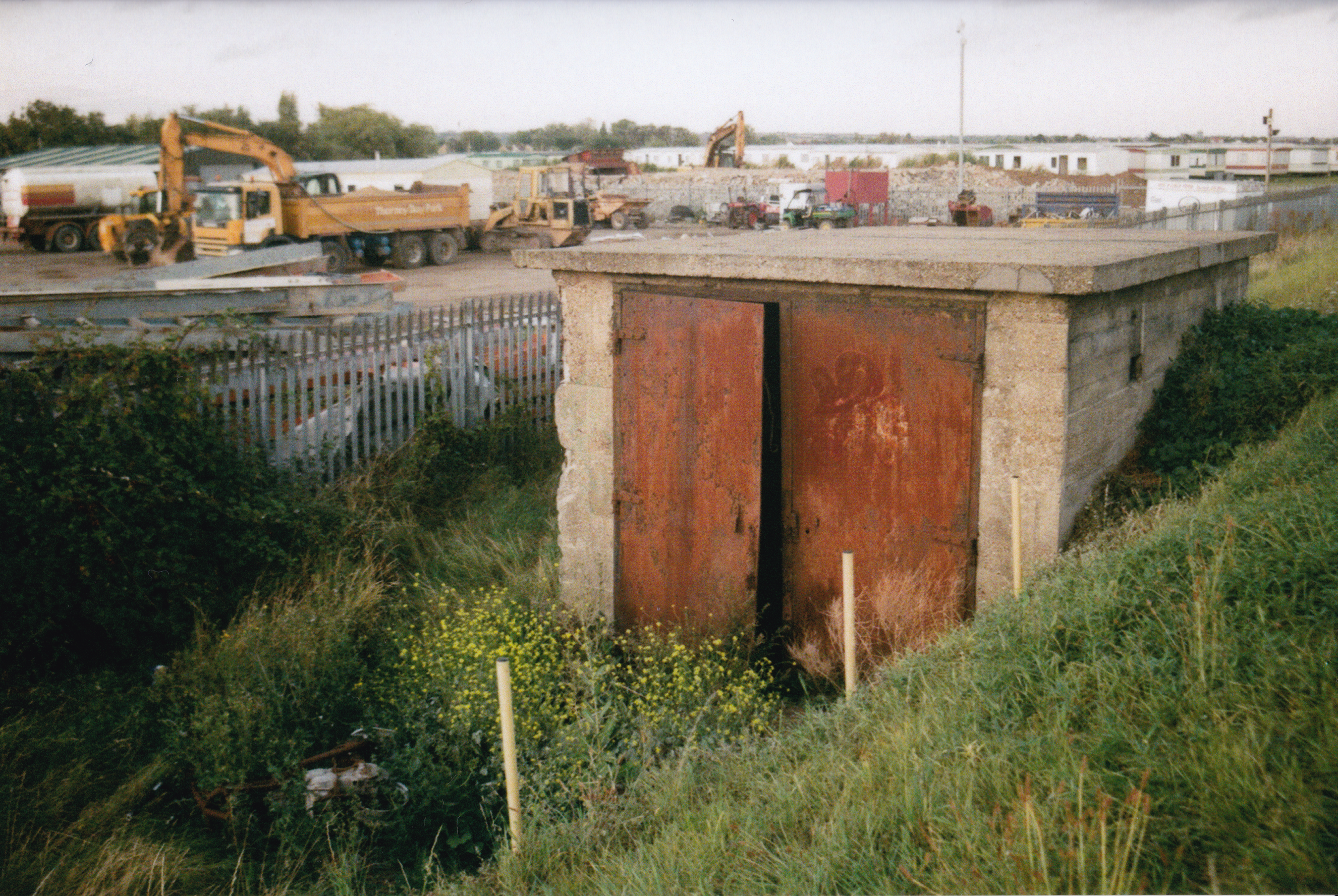
The only obvious remain of the impressive batteries which once stood is this pair of concrete sheds which we believe to be generator huts, in correspondence with plans held at The National Archive in the battery’s fort record book. These were previously thought to be magazines (ammo stores). One served Scars Elbow battery (along the seawall), the other served Deadmans Point battery (further inland). The old plans suggest these buildings held generators for searchlights, and aerial photography suggests that their were searchlights in the seawall at both batteries. The searchlights appear to be similar to those surviving at Shoeburyness. It is a great shame these are all that is left, but their survival is therefore of utmost importance of what was once the Thames’ frontline of defence. Pictured are both huts 2011 (below) and the Scars Elbow hut in 2019 (above) taken on 35mm film by Liam.
Cross-Thames Boom & Comms
Attached to the Scars Elbow battery was a boom – a kind of floating barrier, stretching across the River Thames to Mary Hoo in Kent. On the other side, remains of this survive. These can be seen here. The Canvey side was responsible chiefly for the boom given the battery at this end, and its searchlights may have helped survey its length. The boom had light anti-aircraft defence and possible searchlights at platforms along it. Below are photographs taken by Dave Bullock in 2007 of a PO hut on Canvey just before demolition; possibly for communications to the other end of the river or wider defence of the Thames. The mast shown still survived in 2011 when we captured the picture, but is now sadly gone. However, this was within the Deadmans Point battery site and not at Scars Elbow, although like the searchlight huts below perhaps these duties were shared between the batteries.

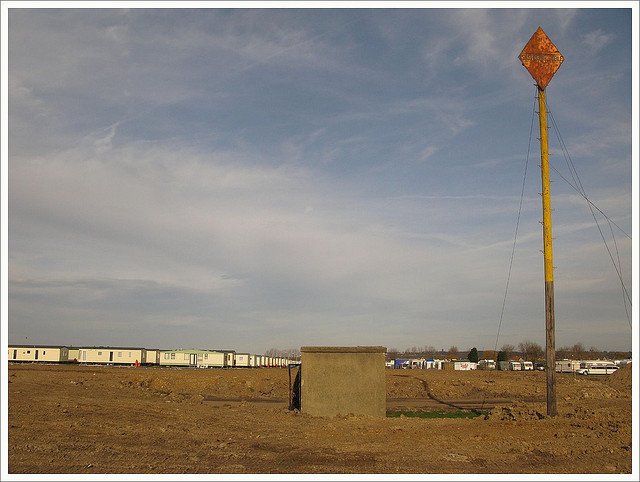
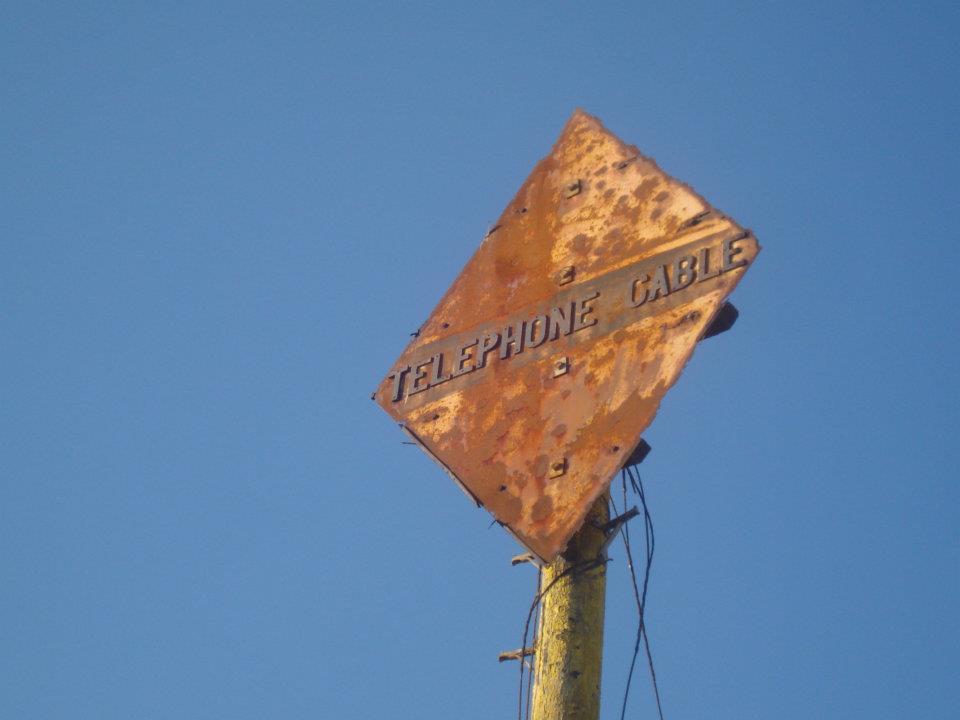
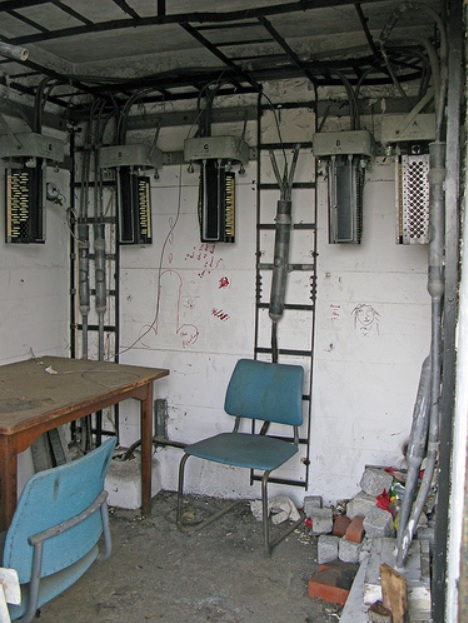
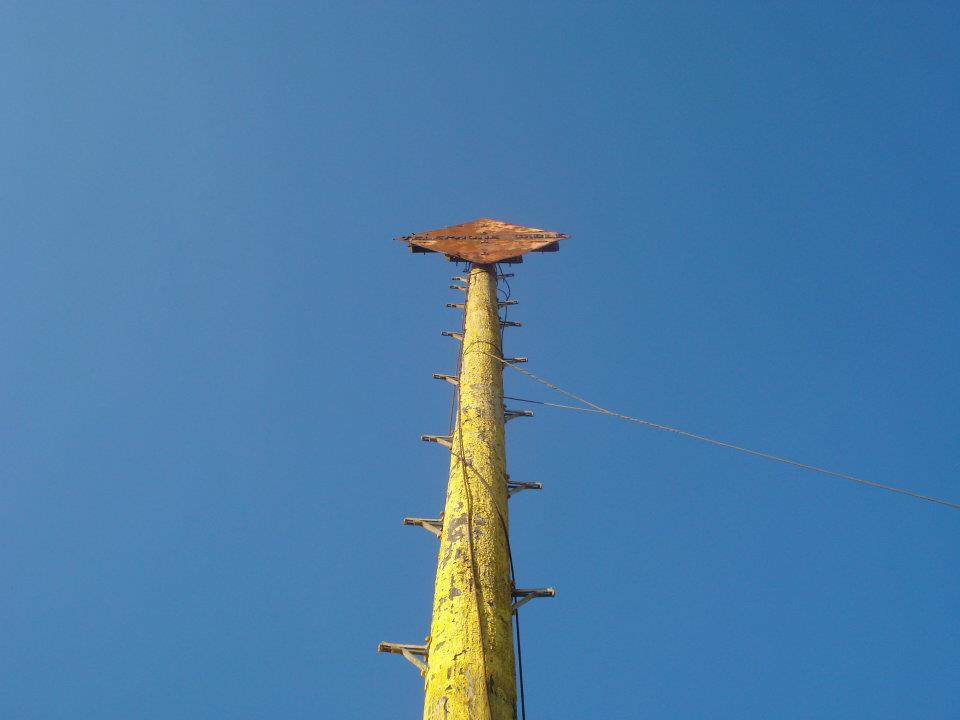
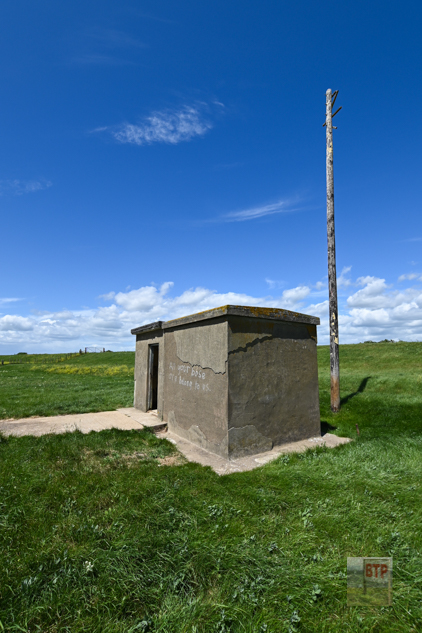
Kent
Fort Record Books at The National Archives
The diagrams below are from Fort Record Books for both batteries, which we viewed at the National Archives in 2014 and 2019. The impressive looking books were essentially made as instruction manuals to the batteries and had to be kept secret and couldn’t be released publicly until 1986. They contain everything from diary accounts to plans and even ballistic information for operation of the guns.
Deadmans Point Book:
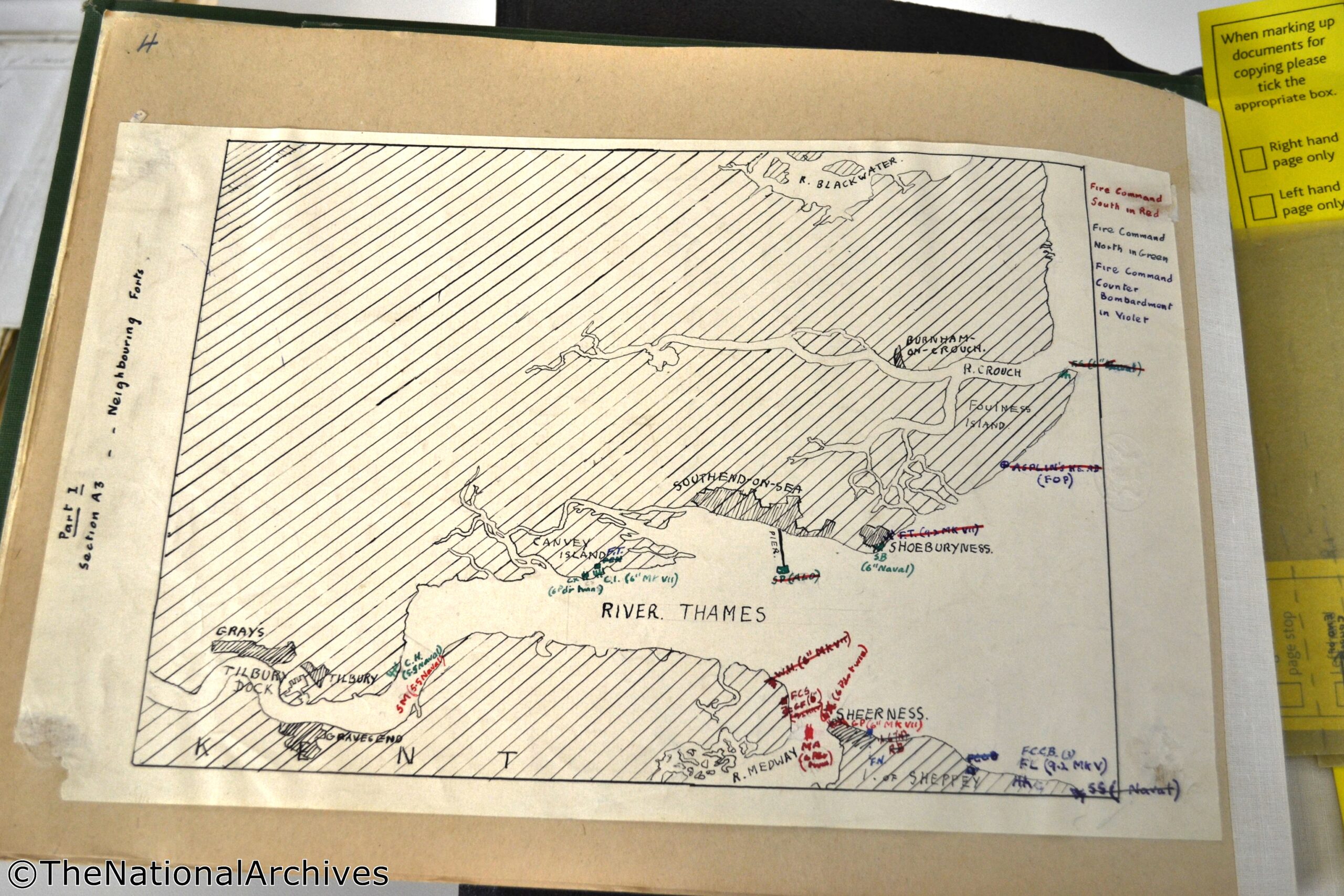
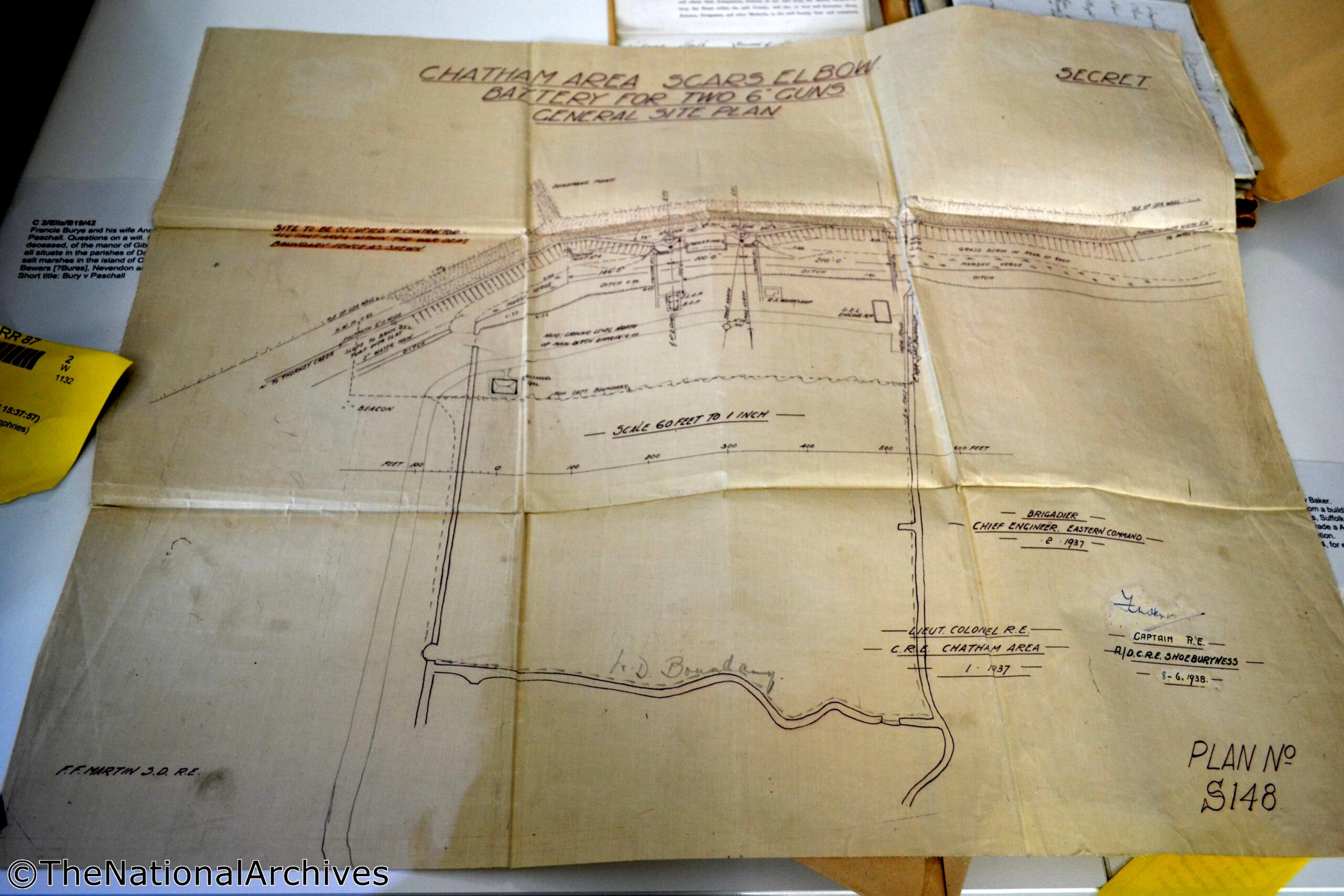
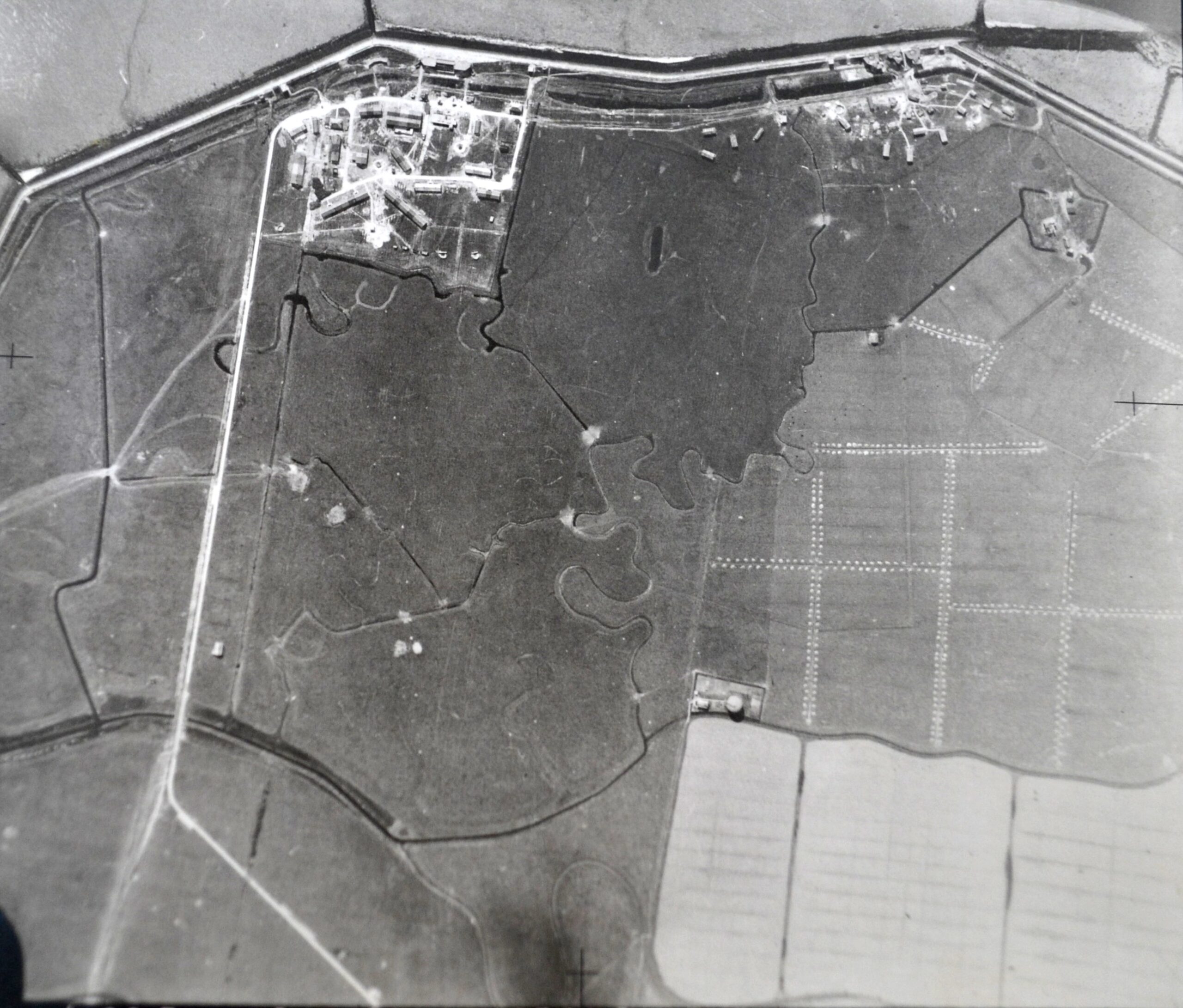
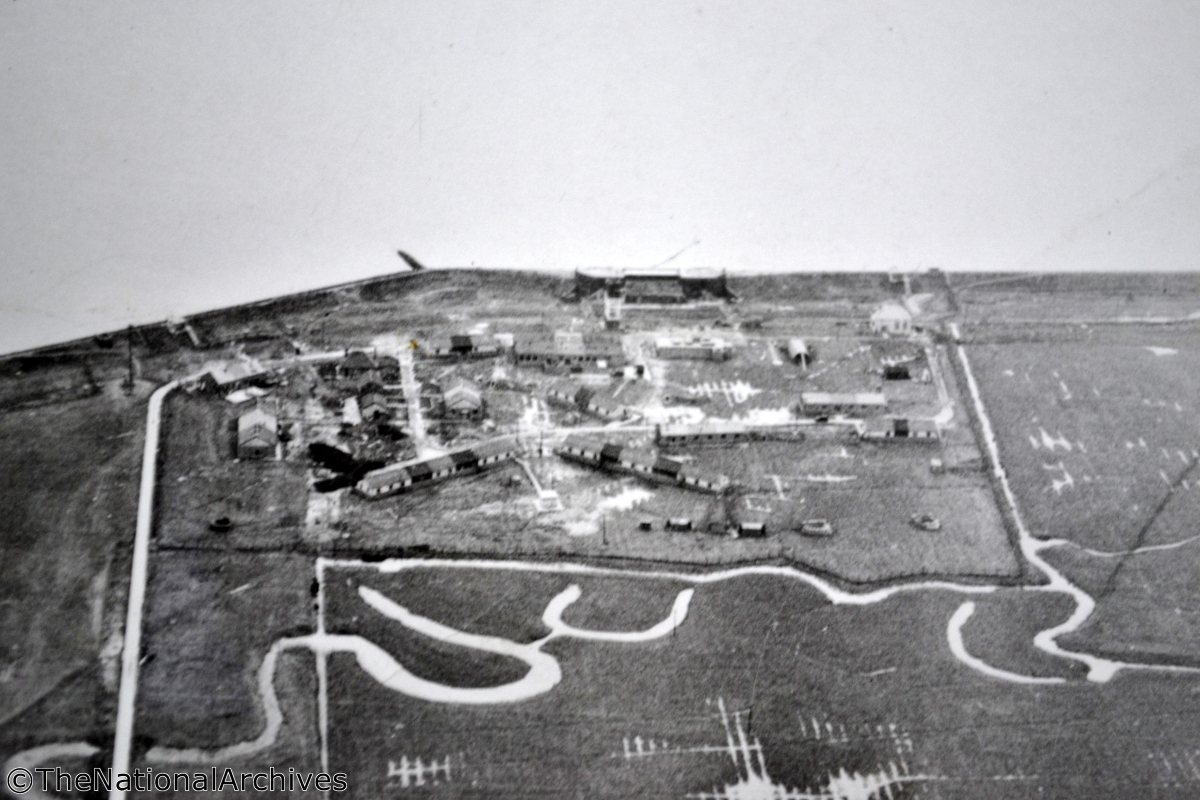
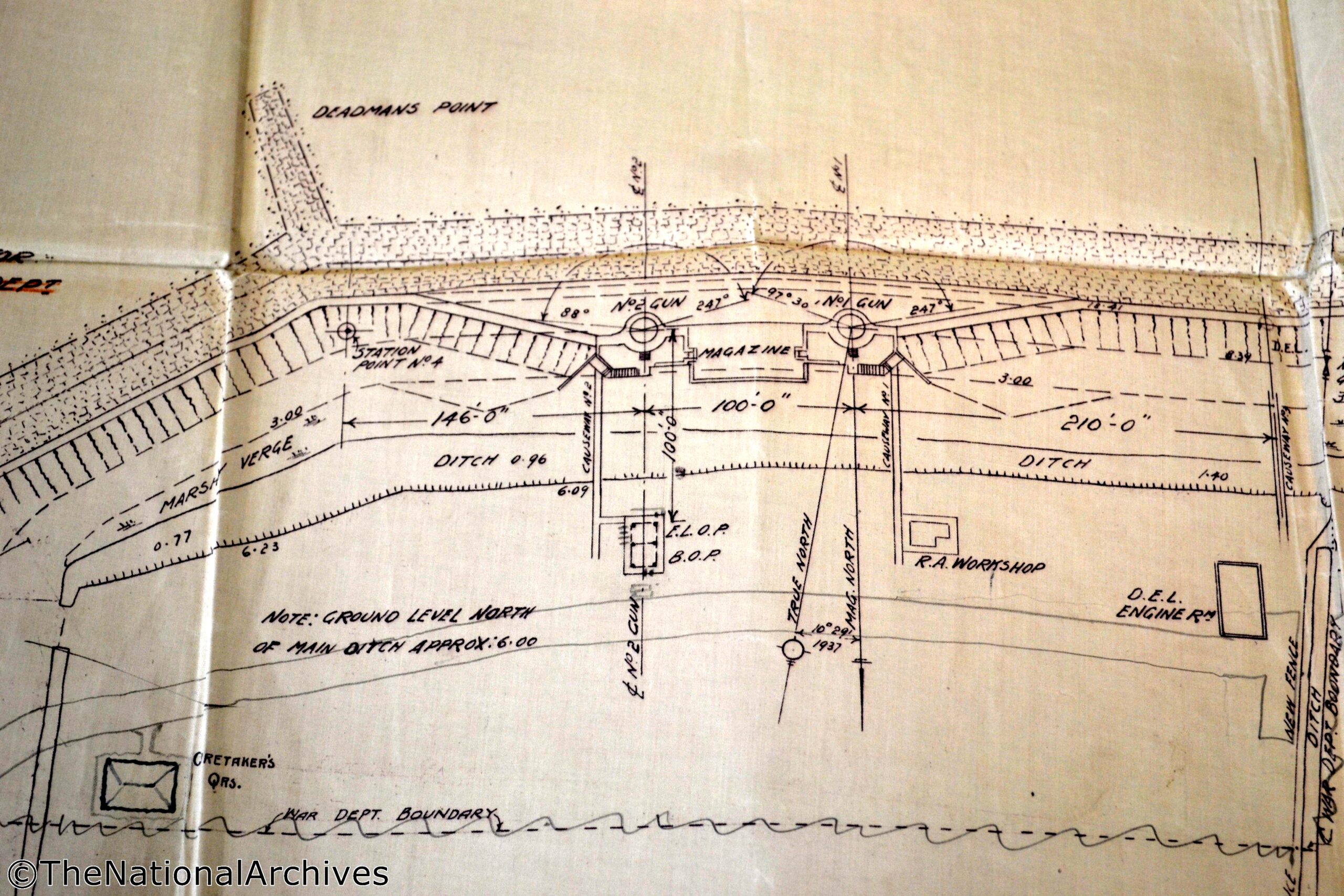
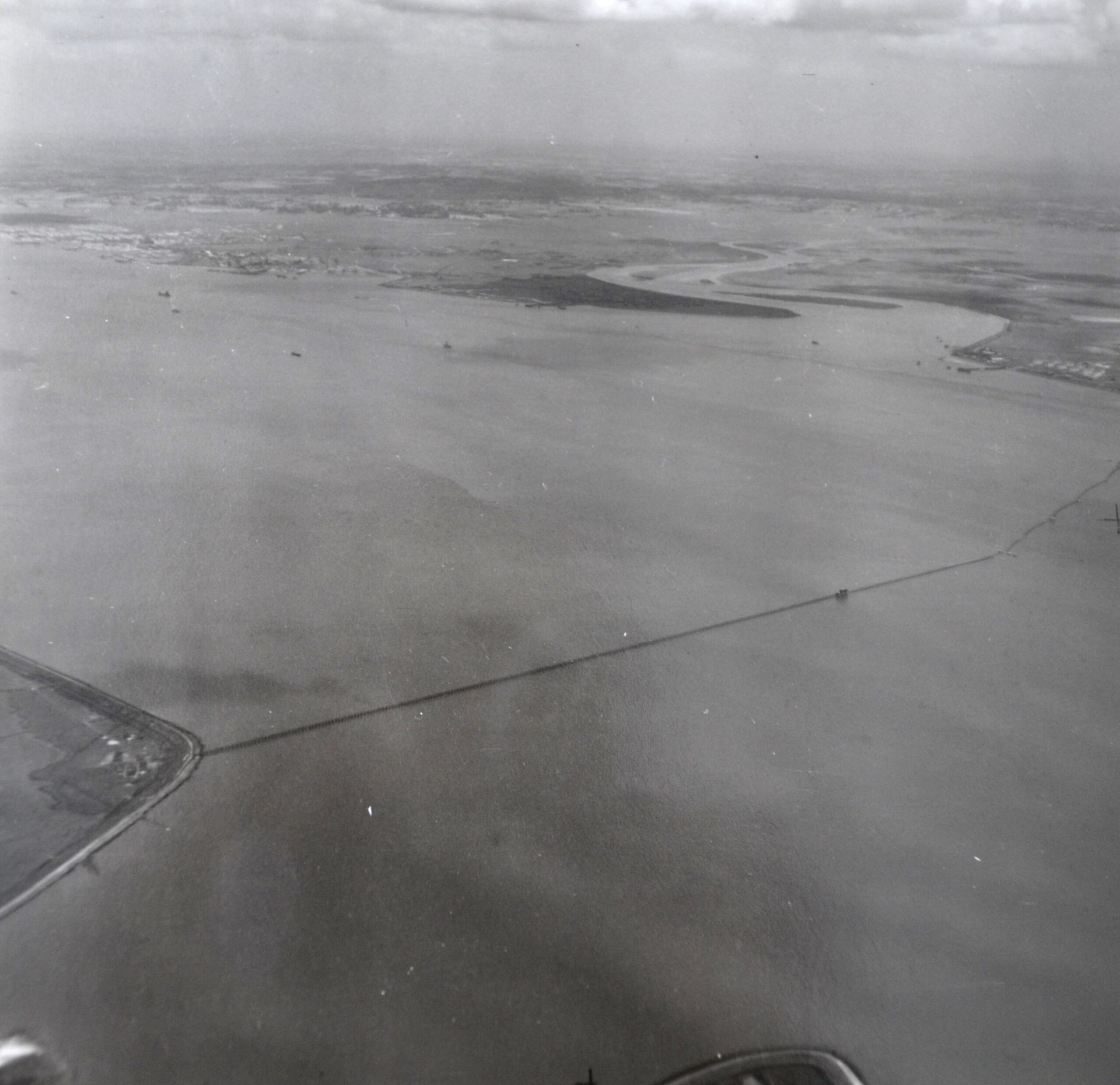
Boom 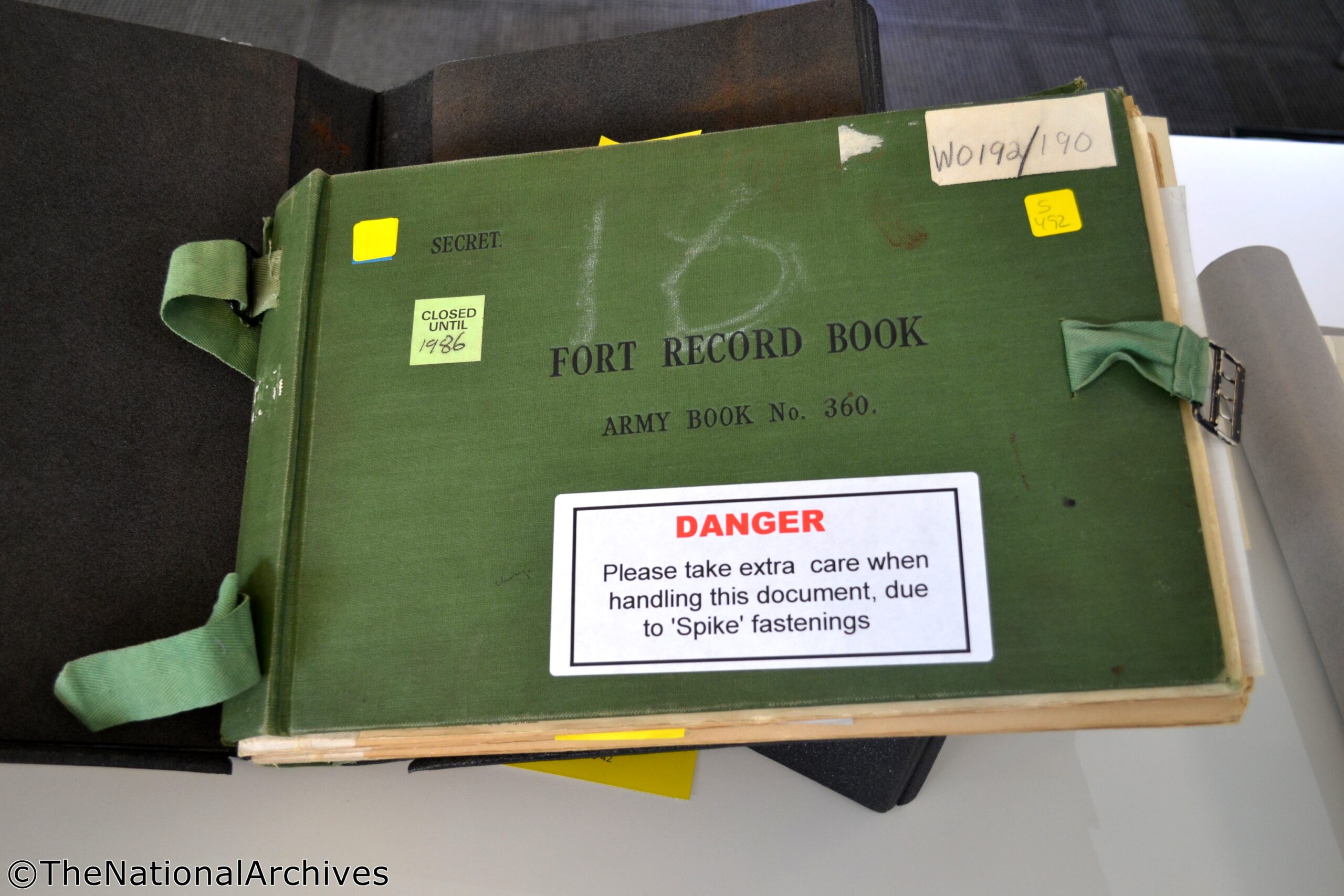
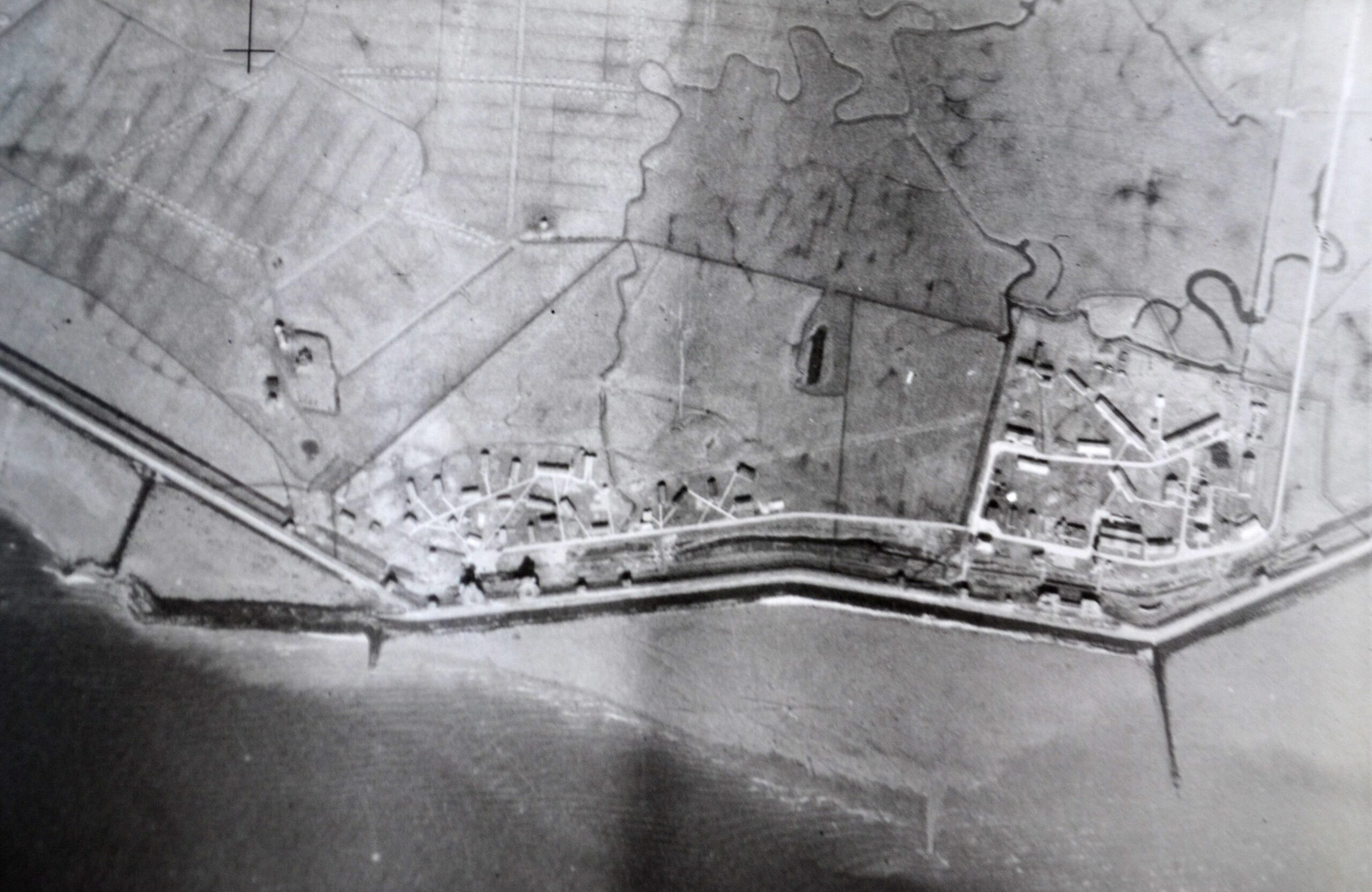
Sources:
Canvey Island Community Archive
PastScape
SEAX Online (now defunct)
The National Archives
Memoirs & other research for Liam’s dissertation
This entry was posted in Location Report
